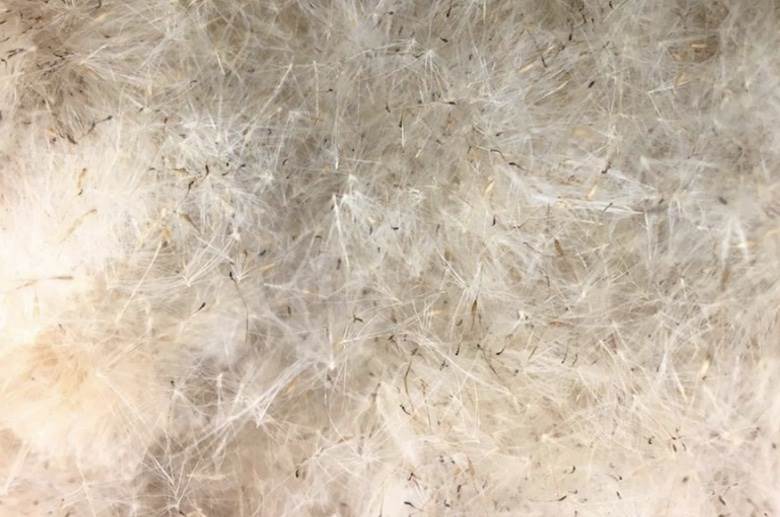Cattail fluff presented as an insulation alternative

Finnish materials start-up Fluff Stuff aims to revitalise the country’s dormant cattail fluff insulation industry, presenting the natural, plant-based material as a potential substitute for both down and fossil-based polyester fillings in winter coats, sleeping bags, soft furnishings and more.
Historically, locally made life vests and pillows were filled with fluffy raw material collected from the broadleaf cattail (Typha latifolia) or narrowleaf cattail (Typha angustifolia) wetland plants, grown in Finland.
Their inflorescences tend to flower in late summer and each fluffy head contains roughly 100,000 seeds.
Founded last year, the company’s co-founders both have personal ties to Aalto University’s Creative Sustainability graduate programme. Designer and gardener Tea Auramo, responsible for strategy at Fluff Stuff, graduated from the programme in 2017, while chief executive Lukas Schuck is set to complete his own studies next year.
The team is currently working alongside National Resources Institute Finland to explore whether the more common broadleaf cattail, in particular, could be cultivated on the country’s unused, drained peat bogs, which can release carbon into the atmosphere as the peat breaks up in the absence of adequate water.
Fluff Stuff’s co-founders have suggested that rewetting these areas to create a more cattail-friendly environment could not only help scale production of their biodegradable filling, but also mitigate greenhouse gas emissions by preventing the disintegration of even more peat in Finland. This makes the start-up an attractive prospect for potential investors, they say.
Other ongoing projects include automating the fluff harvesting process, determining the filling’s specific properties in terms of thermal insulation and allergens, for example, plus developing a process for improving fill power. The latter is a key area for improvement, especially in comparison to down, the team told Aalto University.
Yet, design researcher Laura Rusanen stressed the similarities between the two natural insulators, especially when it comes to softness, elasticity and ability to resume their original shape. “They’re even washed the same way,” she said.
Read about the latest circular insulation technologies for performance textiles in our WSA features section here.
Image: Fluff Stuff.








